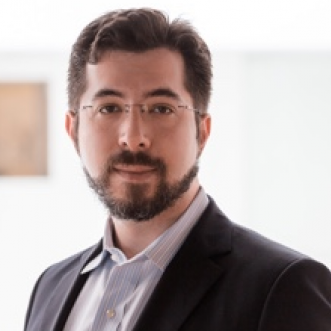




The brain is incredibly complex - each cubic millimeter of your brain contains perhaps a hundred thousand cells, connected by a billion synapses, each operating with millisecond precision. We develop tools that enable the mapping of the molecules and wiring of the brain, the recording and control of its neural dynamics, and the repair of its dysfunction. We distribute our tools as freely as possible to the scientific community, and also apply them to the systematic analysis of brain computations, aiming to reveal the fundamental mechanisms of brain function, and yielding new, ground-truth therapeutic strategies for neurological and psychiatric disorders.
Ed Boyden is Y. Eva Tan Professor in Neurotechnology at MIT, an investigator of the Howard Hughes Medical Institute and the MIT McGovern Institute, and professor of Brain and Cognitive Sciences, Media Arts and Sciences, and Biological Engineering at MIT. He leads the Synthetic Neurobiology Group, which develops tools for analyzing and repairing complex biological systems such as the brain, and applies them systematically to reveal ground truth principles of biological function as well as to repair these systems. These technologies include expansion microscopy, which enables complex biological systems to be imaged with nanoscale precision; optogenetic tools, which enable the activation and silencing of neural activity with light; robotic methods for directed evolution that are yielding new synthetic biology reagents for dynamic imaging of physiological signals, such as neural voltage; novel methods of noninvasive focal brain stimulation; and new methods of nanofabrication using shrinking of patterned materials to create nanostructures with ordinary lab equipment. He co-directs the MIT Center for Neurobiological Engineering, which aims to develop new tools to accelerate neuroscience progress.
Amongst other recognitions, he has received the Wilhelm Exner Medal (2020), the Croonian Medal (2019), the Lennart Nilsson Award (2019), the Warren Alpert Foundation Prize (2019), the Rumford Prize (2019), the Canada Gairdner International Award (2018), the Breakthrough Prize in Life Sciences (2016), the BBVA Foundation Frontiers of Knowledge Award (2015), the Carnegie Prize in Mind and Brain Sciences (2015), the Jacob Heskel Gabbay Award (2013), the Grete Lundbeck Brain Prize (2013), the NIH Director's Pioneer Award (2013), the NIH Director's Transformative Research Award (three times, 2012, 2013, and 2017), and the Perl/UNC Neuroscience Prize (2011). He was also named to the World Economic Forum Young Scientist list (2013) and the Technology Review World’s "Top 35 Innovators under Age 35" list (2006), and is an elected member of the National Academy of Sciences (2019), the American Academy of Arts and Sciences (2017), the National Academy of Inventors (2017), and the American Institute for Medical and Biological Engineering (2018). His group has hosted hundreds of visitors to learn how to use new biotechnologies, and he also regularly teaches at summer courses and workshops in neuroscience, and delivers lectures to the broader public (e.g., TED (2011), TED Summit (2016), World Economic Forum (2012, 2013, 2016)).
Ed received his Ph.D. in neurosciences from Stanford University as a Hertz Fellow, working in the labs of Jennifer Raymond and Richard Tsien, where he discovered that the molecular mechanisms used to store a memory are determined by the content to be learned. In parallel to his PhD, as an independent side project, he co-invented optogenetic control of neurons, which is now used throughout neuroscience. Previously, he studied chemistry at the Texas Academy of Math and Science at the University of North Texas, starting college at age 14, where he worked in Paul Braterman's group on origins of life chemistry. He went on to earn three degrees in electrical engineering and computer science, and physics, from MIT, graduating at age 19, while working on quantum computing in Neil Gershenfeld's group. Long-term, he hopes that understanding how the brain generates the mind will help provide a deeper understanding of the human condition, and perhaps help humanity achieve a more enlightened state. His full CV is posted here.
Member, National Academy of Sciences
Member, American Academy of Arts and Sciences
Member, American Institute for Medical and Biological Engineering (AIMBE) College of Fellows
Royal Society Croonian Medal and Lecture, 2020
Warren Alpert Foundation Prize, 2019
Lennart Nilsson Award, 2019
Rumford Prize for Invention, 2019
Canada Gairdner International Award, 2018
Breakthrough Prize in Life Sciences, 2016
BBVA Foundation Frontiers of Knowledge Award, 2015
Society for Neuroscience Young Investigator Award, 2015
Carnegie Prize in Mind and Brain Sciences, 2015
Schuetze Award in Neuroscience, 2014
Jacob Heskel Gabbay Award, 2013
Grete Lundbeck European Brain Research Prize, 2013
AF Harvey Prize, 2012
Perl/UNC Prize, 2011
For an up-to-date listing please visit http://syntheticneurobiology.org/people